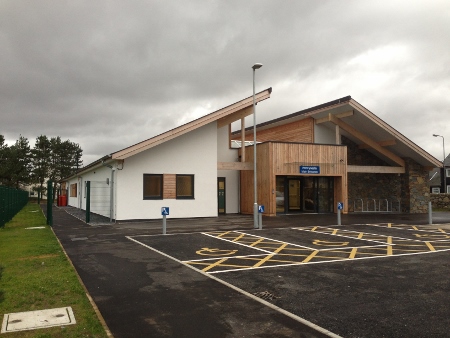This year Assura Group has identified sustainability as a priority for its business and for overall UK primary care. It has been investigating and implementing a number of initiatives to ensure medical centres are built to be as energy efficient and kind to the environment as possible. In this article ANDREW DARKE, managing director for property at Assura Group, discusses the role of sustainbility in healthcare and the additional benefits that a sustainable property can have for community care
As the NHS looks to build a more-streamlined, efficient model of service delivery, the pressure is on primary care to provide more episodes of care for patients in a single location. The consolidation of facilities in one location has been proven to strengthen the quality of local frontline care, and help to alleviate pressure on A&E services.
The advancement of services provided by general practice is integral to the evolution of NHS care. However, the necessary expansion of premises to accommodate new facilities presents a challenge for healthcare property developers in striking a balance between sustainability and cost efficiency.
The extension or development required to expand available services has become a double-edged sword for those hoping to improve primary care. Although new, larger properties run more smoothly and efficiently than their smaller, declining predecessors, extensions or developments still require a larger short-term and long-term budget.
The necessary expansion of premises to accommodate new facilities presents a challenge for healthcare property developers in striking a balance between sustainability and cost efficiency
The need for larger, modern premises in the NHS is acutely felt by staff currently operating from ageing properties, as they attempt to maintain a high standard of care when the resources are not up to scratch. It is therefore essential that we look for innovative new measures that create a sustainable and efficient environment for medical professionals and their patients.
Compliance with both the economic and environmental demands of a modern medical centre is a difficult balancing act, namely because one often comes at the expense of the other. This means that although both cost and energy efficiency are integral components in the healthcare development process, they are often left competing for precedence.
For example, the costs of heating larger premises is particularly troublesome for GPs. The premises require a constant ambient temperature, which imposes certain restrictions on the natural heat that can enter the property. Larger windows making the interior well lit would reduce the electricity bills, while natural light complements feelings of wellbeing within the property, yet too much light and subsequent heat could disturb the balance of the indoor environment.
The necessity of maintaining a constant temperature is also ingrained in privacy policies. While commercial property developers can provide energy-efficient premises with the understanding that rooms can cool by opening a window, stringent privacy regulations within primary care do not always allow for open windows or doors. Additionally, air conditioning installations are not an option within primary care premises, as the cost is not permitted within the District Valuers appraisal.
Although new, larger properties run more smoothly and efficiently than their smaller, declining predecessors, extensions or developments still require a larger short-term and long-term budget
These restrictions are encouraging developers to get creative. One way of reducing the environmental impact of larger windows is planning the orientation of the property to reduce direct sunlight. Another is not glazing all of the windows, instead selecting different windows to insulate and thereby making the building less susceptible to fluctuating temperatures.
Partnering with thermal modellers in the planning process is often the most successful approach to regulating temperature, as they understand how the building’s climatic routine will vary throughout the year and plan accordingly.
Assura Group has been working in partnership with experts in sustainable development to create carbon-neutral premises, with the recent development at Harlech attaining an exemplary zero-carbon rating. This was achieved by looking for eco-efficient alternatives to heating and lighting, and maximising our opportunities to develop environmentally sound resources wherever possible.
The pressures on developers to deliver care facilities that are of a high quality, BREEAM ‘excellent’ and cost-effective can reap some revolutionary results
Another essential part of the design process is the service provided by sustainability surveyors, who can help developers identify different factors that affect the heating and lighting efficiency within a building. Resources that limit the waste generated by healthcare premises range from ground source heat pumps and biomass heaters to photovoltaic panels, which can cut costs and generate sustainable energy for the premises.
The NHS continues to receive a degree of criticism for its reluctance to embrace innovation throughout the service, which is largely attributable to the shortage in available funding. However, the pressures on developers to deliver care facilities that are of a high quality, BREEAM ‘excellent’ and cost-effective can reap some revolutionary results.
By sourcing inventive approaches to cutting excess costs and wastage, primary care is paving the way for innovative development in the rest of the NHS, and can provide a comfortable, effective and sustainable environment for patients in their communities.

The recent development at Harlech attained an exemplary zero-carbon rating




